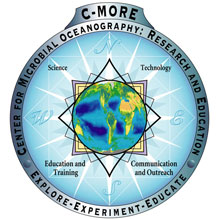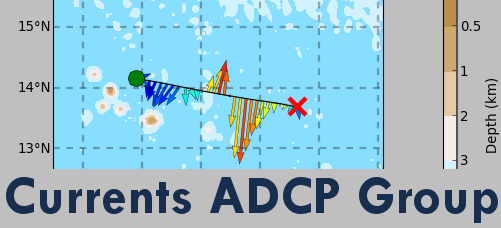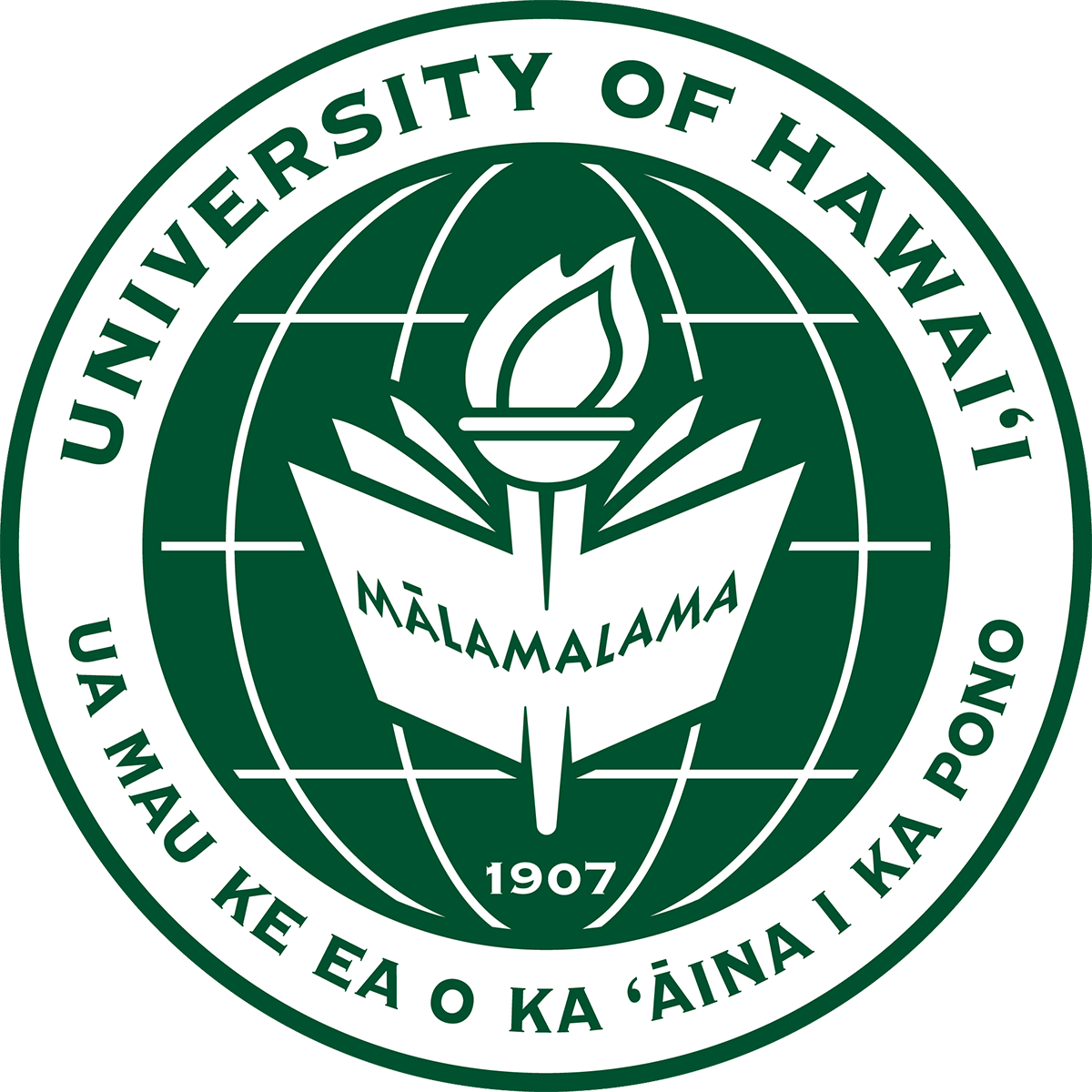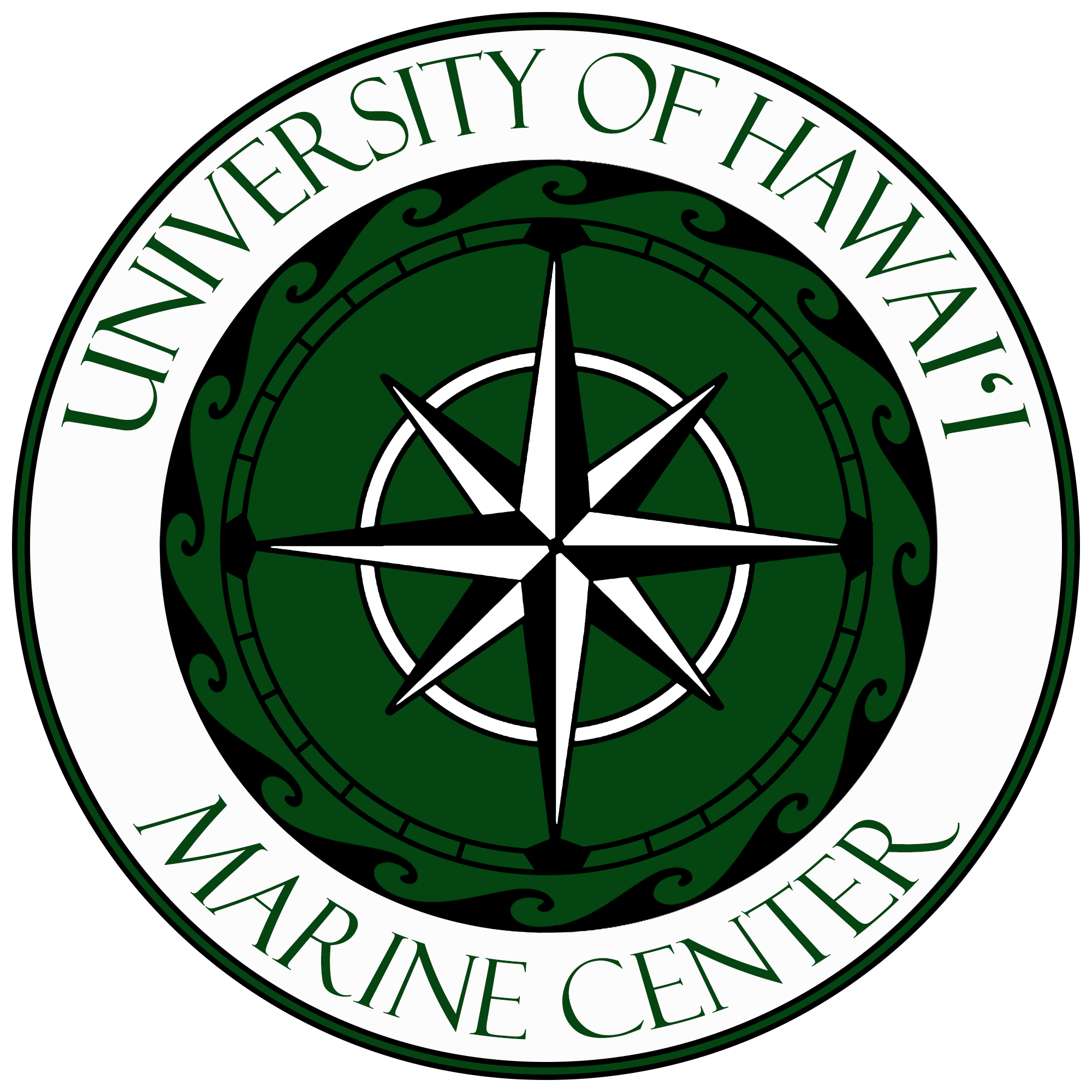There are a number of specialized research groups and projects that work collaboratively with the UH Marine Center in planning and executing marine operations, including the Center for Microbial Oceanography: Research and Education (C-MORE), the Hawaii Ocean Time Series (HOT) program, and ALOHA Cabled Observatory. In addition, there are a number data archives made accessible through SOEST and the Marine Center that host data collected through shipboard activities and with past research groups like Hawai’i Undersea Research Laboratory (HURL) and Hawai’i Mapping Research Group (HMRG).

|
Station Aloha and Aloha Cabled ObservatoryStation ALOHA is the focal point of a range of oceanographic studies conducted over time that are designed to understand and explain the trends of the greater North Pacific Ocean. Station ALOHA was established in 1988 as the start of A Long-term Oligotrophic Habitat Assessment (ALOHA); this assessment continues today but has been expanded over time to incorporate additional research. The Hawai’i Ocean Time-series (HOT) program has made monthly observations for over 20 years and continues today. In 2004, a collaboration between Woods Hole Oceanographic Institution (WHOI) and HOT program, called the WHOI Hawai’i Ocean Time-series Site (WHOTS), began deploying a mooring yearly to observe upper ocean-atmosphere interaction. Since 2008, sea gliders visit Station ALOHA several times a year to add baseline data about the upper ocean to the already impressive pool of observations about this representative site. The newest dimension of ocean observation at Station ALOHA is the ALOHA Cabled Observatory (ACO), installed in June of 2011 on the seafloor 5 km below the surface. With ACO, researchers at UH now have the ability to send electric power and commands to instruments on the seafloor at Station ALOHA instantly so that scientists can actively observe oceanographic conditions and the habitat. Both UH vessels are regularly used to conduct research at Station ALOHA. |

|
HOTScientists working on the Hawai’i Ocean Time-series (HOT) program have been making repeated observations of the hydrography, chemistry and biology of the water column at a station north of O’ahu, Hawaii’ since October 1988. HOT is based at UH and receives funding from the U.S. National Science Foundation. The objective of HOT research is to provide a comprehensive description of the ocean at a site representative of the North Pacific subtropical gyre. Cruises are made approximately once per month to the deep-water Station ALOHA located 100 km north of O’ahu, Hawai’i. As one of the most frequent users of UH vessels, HOT works closely with the UH Marine Center to coordinate and plan operations. |

|
C-MOREThe Center for Microbial Oceanography: Research and Education (C-MORE) is a National Science Foundation-sponsored Science and Technology Center. C-MORE’s work is designed to facilitate a more comprehensive understanding of the biological and ecological diversity of marine micro-organisms. The main C-MORE facility is located at the University of Hawai’i at Manoa, which co-ordinates the C-MORE consortium (UH, Massachusetts Institute of Technology, Woods Hole Oceanographic Institution, Monterey Bay Aquarium Research Institute, University of California at Santa Cruz, and Oregon State University). The C-MORE program works closely with the UH Marine Center and conducts several annual research cruises aboard UH vessels. |

|
Deep-sea Animal Research CenterThe Deep-Sea Animal Research Center (DARC) is dedicated to assembling and curating data sets for deep-sea research. The team of annotation experts specializes in analyzing video and still imagery data from remotely operated vehicles (ROV), submersibles, and stationary camera systems using various annotation platforms and databases. |

|
HURL ArchiveThe Hawai’i Undersea Research Laboratory (HURL) has specialized in providing scientists with the tools and expertise they need to investigate the undersea environment for over 30 years. All data collected by the submersibles, remotely operated vehicles, and other technologies are now available through this self-serve repository. |

|
Currents ADCP GroupThe Currents Acoustic Doppler Current Profiler (ADCP) group has developed a suite of collection & processing software for ADCP data that is deployed on both UH ships, as well as on numerous other UNOLS and NOAA ships. ADCP data from all participating vessels are monitored in near-real time to assure that instrumentation is working properly & that high-quality data are collected. The Currents ADCP group is also responsible for Shipboard & Lowered ADCP operations on CLIVAR Repeat Hydrography cruises. |

|
Hawai’i Mapping Research Group Map ArchiveThe Hawai’i Mapping Research Group (HMRG) was a SOEST research group that specialized in seafloor mapping technology development and mapping services for over 25 years. Check out the MHRG website to download bathymetric synthesis maps for the Hawaiian Islands. |

|
Shipboard DataScientific data from many sensors are logged continuously during transits and station operations. All raw data is sent to the NSF-funded Rolling Deck to Repository (R2R) facility within 60 days of cruise end. Data archived and transmitted to R2R are grouped into Underway, Multibeam, and Acoustic Doppler Current Profiler (ADCP) Data. Underway data may include Conductivity, Temperature, and Depth (CTD), echosounder, expendable probe, fluorometer, gravimeter, magnetometer, meteorology, navigation, partial pressure of dissolved oxygen, sea surface sound velocity, sub bottom, thermosalinograph, and winch information. |

|
DredgeBase Geologic RespositoryDredgeBase is a vast library of material from across the Pacific Ocean seafloor from Japan and the Marianas in the west to the Galapagos in the east, from the Emperor Seamounts in the north to the East Pacific Rise in the south, with the Line Islands, Northwestern and main Hawaiian Islands, and the Musician Seamounts in the central portion. The collection consists of approximately 4,000 five-gallon buckets of rocks, plus an additional several thousand meters of drill cores in sections from sites on Midway Atoll, Oʻahu, and Hawaiʻi islands. Although dredged material makes up the bulk of the archive, many samples were targeted collections by human occupied submersibles and robotic vehicles. Chronology of sample acquisition ranges from the late 1960’s to the early 2000’s. |

Station Aloha and Aloha Cabled ObservatoryStation ALOHA is the focal point of a range of oceanographic studies conducted over time that are designed to understand and explain the trends of the greater North Pacific Ocean. Station ALOHA was established in 1988 as the start of A Long-term Oligotrophic Habitat Assessment (ALOHA); this assessment continues today but has been expanded over time to incorporate additional research. The Hawai’i Ocean Time-series (HOT) program has made monthly observations for over 20 years and continues today. In 2004, a collaboration between Woods Hole Oceanographic Institution (WHOI) and HOT program, called the WHOI Hawai’i Ocean Time-series Site (WHOTS), began deploying a mooring yearly to observe upper ocean-atmosphere interaction. Since 2008, sea gliders visit Station ALOHA several times a year to add baseline data about the upper ocean to the already impressive pool of observations about this representative site. The newest dimension of ocean observation at Station ALOHA is the ALOHA Cabled Observatory (ACO), installed in June of 2011 on the seafloor 5 km below the surface. With ACO, researchers at UH now have the ability to send electric power and commands to instruments on the seafloor at Station ALOHA instantly so that scientists can actively observe oceanographic conditions and the habitat. Both UH vessels are regularly used to conduct research at Station ALOHA. |
|

HOTScientists working on the Hawai’i Ocean Time-series (HOT) program have been making repeated observations of the hydrography, chemistry and biology of the water column at a station north of O’ahu, Hawai’i since October 1988. HOT is based at UH and receives funding from the U.S. National Science Foundation. The objective of HOT research is to provide a comprehensive description of the ocean at a site representative of the North Pacific subtropical gyre. Cruises are made approximately once per month to the deep-water Station ALOHA located 100 km north of O’ahu, Hawai’i. As one of the most frequent users of UH vessels, HOT works closely with the UH Marine Center to coordinate and plan operations. |
|

C-MOREThe Center for Microbial Oceanography: Research and Education (C-MORE) is a National Science Foundation-sponsored Science and Technology Center. C-MORE’s work is designed to facilitate a more comprehensive understanding of the biological and ecological diversity of marine micro-organisms. The main C-MORE facility is located at the University of Hawai’i at Manoa, which co-ordinates the C-MORE consortium (UH, Massachusetts Institute of Technology, Woods Hole Oceanographic Institution, Monterey Bay Aquarium Research Institute, University of California at Santa Cruz, and Oregon State University). The C-MORE program works closely with the UH Marine Center and conducts several annual research cruises aboard UH vessels. |
|

Deep-sea Animal Research CenterThe Deep-Sea Animal Research Center (DARC) is dedicated to assembling and curating data sets for deep-sea research. The team of annotation experts specializes in analyzing video and still imagery data from remotely operated vehicles (ROV), submersibles, and stationary camera systems using various annotation platforms and databases. |
|

HURL ArchiveThe Hawai’i Undersea Research Laboratory (HURL) has specialized in providing scientists with the tools and expertise they need to investigate the undersea environment for over 30 years. All data collected by the submersibles, remotely operated vehicles, and other technologies are now available through this self-serve repository. |
|

Currents ADCP GroupThe Currents Acoustic Doppler Current Profiler (ADCP) group has developed a suite of collection & processing software for ADCP data that is deployed on both UH ships, as well as on numerous other UNOLS and NOAA ships. ADCP data from all participating vessels are monitored in near-real time to assure that instrumentation is working properly & that high-quality data are collected. The Currents ADCP group is also responsible for Shipboard & Lowered ADCP operations on CLIVAR Repeat Hydrography cruises. |
|

Hawai’i Mapping Research Group Map ArchiveThe Hawai’i Mapping Research Group (HMRG) was a SOEST research group that specialized in seafloor mapping technology development and mapping services for over 25 years. Check out the MHRG website to download bathymetric synthesis maps for the Hawaiian Islands. |
|

Shipboard DataScientific data from many sensors are logged continuously during transits and station operations. All raw data is sent to the NSF-funded Rolling Deck to Repository (R2R) facility within 60 days of cruise end. Data archived and transmitted to R2R are grouped into Underway, Multibeam, and Acoustic Doppler Current Profiler (ADCP) Data. Underway data may include Conductivity, Temperature, and Depth (CTD), echosounder, expendable probe, fluorometer, gravimeter, magnetometer, meteorology, navigation, partial pressure of dissolved oxygen, sea surface sound velocity, sub bottom, thermosalinograph, and winch information. |
|

|
DredgeBase Geologic RespositoryDredgeBase is a vast library of material from across the Pacific Ocean seafloor from Japan and the Marianas in the west to the Galapagos in the east, from the Emperor Seamounts in the north to the East Pacific Rise in the south, with the Line Islands, Northwestern and main Hawaiian Islands, and the Musician Seamounts in the central portion. The collection consists of approximately 4,000 five-gallon buckets of rocks, plus an additional several thousand meters of drill cores in sections from sites on Midway Atoll, Oʻahu, and Hawaiʻi islands. Although dredged material makes up the bulk of the archive, many samples were targeted collections by human occupied submersibles and robotic vehicles. Chronology of sample acquisition ranges from the late 1960’s to the early 2000’s. |


